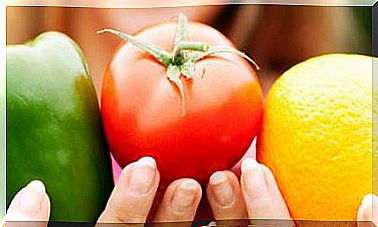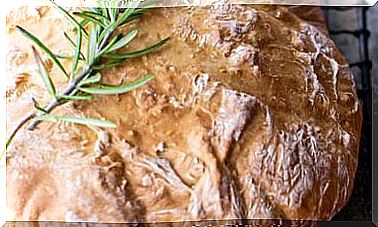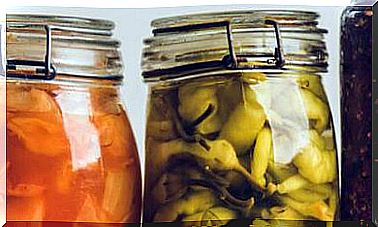How Many Times A Day You Should Eat To Speed Up Your Metabolism
If you want to burn fat faster, you have probably been advised several tricks to speed up your metabolism. This is what science says about it.

Not everyone knows what metabolism is, but everyone wants to speed it up in any way to burn more fat … Right? Before we know if that’s true and if fasting or detoxing can actually slow your metabolism, let’s start by explaining what metabolism is and how it works.
What is metabolism
The metabolism is all the chemical reactions that are carried out in the body to be able to carry out all our functions; it is a process by which some chemicals are broken down and others are formed.
There are two chemical processes of metabolism that work simultaneously and these are anabolism and catabolism.
- Anabolism refers to the chemical reactions that occur when the body takes simple molecules and uses them to build new substances.
- Catabolism is when the body breaks complex chemicals into simpler substances or molecules and hence can form other substances.
People normally talk about metabolism as if it’s just how fast or slow you burn the calories you eat, but this goes much further. This “type” of metabolism is what we refer to by resting metabolic rate (RMR) and this is equal to the calories you consume for existence (that is, it does not include any type of physical activity, it is only the energy you need to carry out vital functions).
How to speed up metabolism
The TMR depends on factors such as genetics and how much muscle mass you have. There are people who consider that eating several meals a day speeds up the metabolism. This idea arises because when you eat you expend energy to be able to digest and break down food into all its components – this is called the thermogenic effect of food (ETA). However, while this makes sense, eating several meals a day has not been proven to affect metabolism.
There are studies published in major scientific journals (such as the British Journal of Nutrition) where it has been shown that the frequency of meals per day does not affect people’s body weight, the only thing that affects is the type and amount of food eaten.
There is also the belief that extreme fasting or detoxing slows the metabolism, but just as the frequency of meals did not show changes in TMR, neither did the fasting. In fact, a 2005 study published in one of the most important scientific journals in the United States, The American Journal of Clinical Nutrition, found that fasts on alternate days (one day you eat and the other you do not and so on) could increase the oxidation of fat favoring a decrease in body weight.
The only thing really proven to speed up the metabolism is the increase in muscle mass. This is because muscle is an active tissue that needs energy to perform its functions, so the more you have, the more energy your body needs, so the resting metabolic rate increases.
To increase muscle mass it is important to consume an adequate and sufficient amount of food and, if these come from natural and whole sources such as those recommended in the Eat Clean philosophy, the body will be able to take better advantage of them. Above all, I recommend natural and whole foods because they contain an adequate balance of carbohydrates, proteins and fats.
So … how many times a day do you have to eat?
There are different criteria that establish guidelines for the meals to be eaten per day. Some suggest eating 3 main meals and two small snacks a day, others only promote the consumption of the 3 main meals without eating between meals, others recommend intermittent fasting, etc. Which one do we listen to? It depends…
Many nutritionists recommend the 3 main meals and 2 snacks, because it has been found that it is easier for people to control their portions if they do not arrive at their next meal very hungry.
It has also been seen that some people with gastritis benefit when they eat approximately every 4 hours. However, these rules do not apply to everyone, so we cannot take it as a rule for everyone.
The Ayurvedic philosophy states that we should eat only when there is sun, since this is connected to our digestion, and suggests eating three meals a day during specific times according to the season of the year in which we find ourselves.
Each person is unique and different and each day can vary greatly for the same individual. Therefore, it is important to listen to our body and try to eat only when we are hungry.
Eye! If you are someone who is very distracted or with little structure in your life, it may be necessary to establish specific times to eat or increase your level of consciousness in order to be able to listen to your body properly.
Bibliography
- Smeets AJ, Westerterp-Plantenga MS. Acute effects on metabolism and appetite profile of one meal difference in the lower range of meal frequency. British Journal of Nutrition. Cambridge University Press; 2008; 99 (6): 1316–21.
- Verboeket-van de Venne WP, Westerterp KR. Influence of the feeding frequency on nutrient utilization in man: consequences for energy metabolism. European Journal of Clinical Nutrition [01 Mar 1991, 45 (3): 161-169].
- Bellisle F, McDevitt R, Prentice AM. Meal frequency and energy balance. British Journal of Nutrition. Cambridge University Press; 1997; 77 (S1): S57-S70.
- Munsters MJM, Saris WHM. Effects of Meal Frequency on Metabolic Profiles and Substrate Partitioning in Lean Healthy Males. Hennige AM, ed. PLoS ONE. 2012; 7 (6): e38632.
- Maughan RJ, Fallah J, Coyle EF. The effects of fasting on metabolism and performance. British Journal of Sports Medicine. 2010; 44: 490-494.
- Leonie K Heilbronn, Steven R Smith, Corby K Martin, Stephen D Anton, Eric Ravussin; Alternate-day fasting in nonobese subjects: effects on body weight, body composition, and energy metabolism, The American Journal of Clinical Nutrition, Volume 81, Issue 1, 1 January 2005, Pages 69–73.









